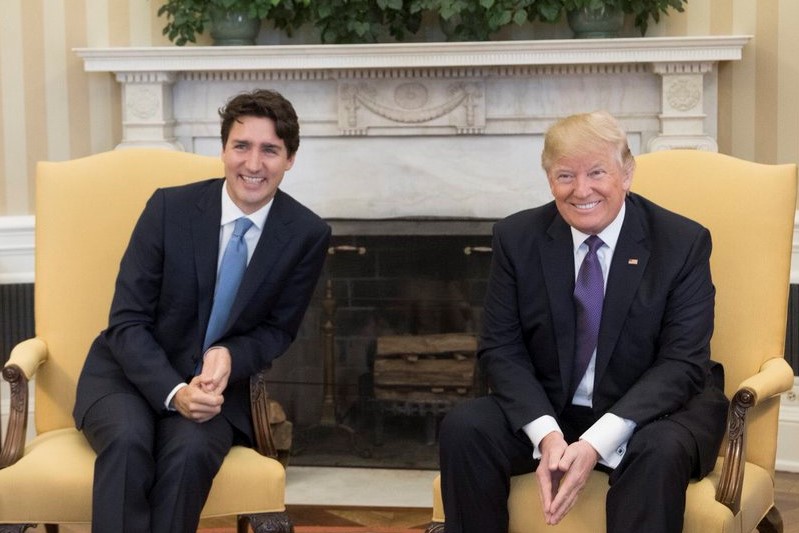
Renegotiating unfavourable trade agreements was a key campaign promise of President Trump. Whether grounded in empirical realities or otherwise, Trump managed to emerge as a credible representative of America’s losers from trade liberalization. What began as rhetorical sabre-rattling eventually morphed into increased tariffs and rampant uncertainty regarding the longevity of America’s trade deals with China, Canada, Mexico, the European Union and others.
With the conclusion of a renegotiated NAFTA, now known as the USMCA, some of that rising uncertainty was put to rest. Trade agreements are lengthy codes of law, with several clauses and sub-clauses. It will take weeks or even months to get a concrete picture of the complete ramifications of USMCA.
But regardless of the nitty-gritties, most analysts agree that this renegotiated trade deal is better than a no-deal for both parties. Now, USMCA now has to be ratified by the respective legislatures of Canada, Mexico, and the US.
At the outset, Canada’s demands included the continuity of Chapter 19 – NAFTA’s inter-state dispute resolution mechanism and status quo on tariffs pertaining to automobile and automobile parts. On the US side, the demands included the removal of Chapter 19, increased access to Canadian dairy markets, and asking Canada to raise the minimum threshold, below which American and Mexican goods can enter Canada duty-free.
USMCA is a compromise between Canadian and American demands. Chapter 19 was preserved in its previous form and Canadians have been assured of maintaining status quo with respect to auto tariffs. As pointed out by McGill’s Professor Krzysztof Pelc, while Chapter 19 stays intact, the investor-state dispute mechanism has been severely diluted.
Generally, most of investor-state dispute governance is carried out by provisions within trade agreements. USMCA watering down these clauses adversely affects the investor-state dispute resolution system within North America.
On the other hand, America has received increased access to Canadian dairy markets and the increase of Canada’s minimum duty-free threshold. However, the true effect of increased dairy market access is more nuanced. Canada’s supply management system – a complex system which regulates and protects the domestic dairy, poultry, and eggs market – remains intact.
This supply management was a major irritant for the Trump Administration. In what can be seen as a compromise, while the Canadians get to keep their supply management in place, they have been forced to eliminate the pricing scheme for “Class 7” products. Consequently, the US dairy farmers can now export more skim milk powder, milk protein concentrate, and infant formula to Canadian markets. Additionally, the USMCA grants increased access to the much-disputed wine markets in the western province of British Columbia.
As acknowledged by the American trade negotiator, Robert Lighthizer, the Trans-Pacific Partnership (TPP) emerged as a blueprint for the new UMSCA. Along the lines of TPP, the environmental and labour standards for North America have been greatly enhanced, which is seen as a major point of victory for the Trump administration. Trump has personally accused Mexico of capturing American manufacturing via low labour standards. The newly improved IP regulations can also be attributed to the TPP.
Perhaps the biggest game changer in the new trade deal is to do with the re-evaluation of NAFTA’s Rules of Origin. This clause had previously mandated that to qualify for zero tariffs, at least 62.5% of each good had to be manufactured in the NAFTA area. This threshold has now been increased to 75%.
Analysts point out that while American automobile makers such as GM and Ford are likely to gain, German makers such as Audi and Volkswagen – which import their engines from outside North America – are likely to lose. This may result in increased prices of European cars in North America.
Most stakeholders in Mexico, Canada and the US are relieved that a no-deal scenario has been averted. But any analysis of USMCA needs to take into account some underlying political and economic realities.
The Trump administration will go back to its Republican voter base and sell this renegotiated NAFTA as a better trade deal, one which is more favourable for Americans. Symbolically, renaming the trade agreement as USMCA allows Trump to claim all the credit. As a consequence, the upcoming midterm elections might witness some votes swing in the favour of the Republicans.
But a cost-benefit analysis needs to be undertaken to compare the gains from a new agreement and the costs incurred by the US from the very process of renegotiation and the severe uncertainty it has caused. Most firms plan their future investments well in advance.
Given the long-stretched uncertainty over NAFTA, it is plausible that some firms have already planned to redirect their future investments away from the US. They might find it cheaper to move their supply chains outside North America, even with the additional cost of tariffs. Uncertainty generally accompanies cost.
However, it needs to be acknowledged that USMCA is substantively the first big victory for Trump’s negotiation style and perhaps, his foreign policy at-large. Despite having provided us with some answers, some questions linger. Can Trump be credited for creating a crisis and then resolving it? Will such a negotiating strategy of maximum sticks and few carrots succeed with a rising hegemon like China? But, most importantly, will the very global trading regime survive this brutal onslaught by an insurgent American administration?
The opinions expressed in this article are solely those of the author and they do not reflect the position of the McGill Journal of Political Studies or the Political Science Students’ Association.
Feature image is a work by the US government, via Wikimedia Commons.